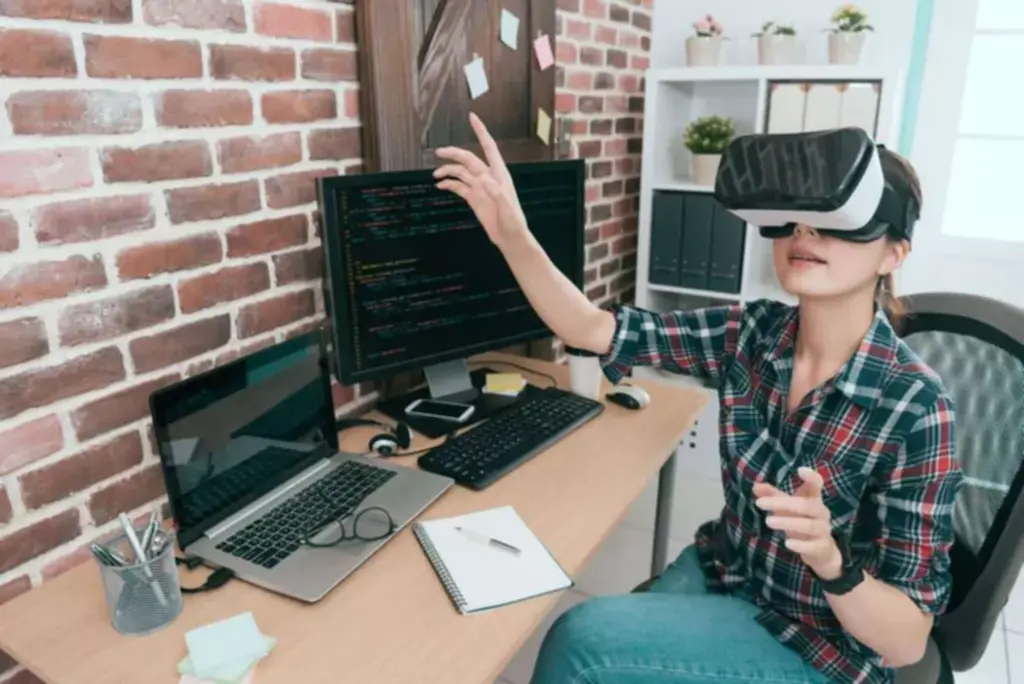An RNN that processes the enter sequence forward and backwards, permitting the mannequin to capture dependencies in both instructions, is called a bi-directional recurrent neural network (RNN). This is helpful for duties like language translation and language modelling, the place the context of a word can rely upon types of rnn each previous and future words. Elman RNNs are incessantly employed for processing sequential knowledge, such as speech and language translation. They are simpler to construct and practice than more sophisticated RNN architectures like long short-term reminiscence (LSTM) networks and gated recurrent units (GRUs). The community is skilled like the recurrent neural network as back-propagation through time. The vanishing gradient downside is a problem that affects the training of deep neural networks, including Recurrent Neural Networks (RNNs).
Recurrent Neural Network Guide: A Deep Dive In Rnn
Well, the purpose of an activation operate is to add non-linearity to the neural network. Feedforward Propagation – the flow of data happens in the forward direction. The enter is used to calculate some intermediate operate within the hidden layer, which is then used to calculate an output. The hidden layer performs all types of computation on the features entered by way of the input layer and transfers the outcome to the output layer. This method has been utilized in earlier research to diagnose a brain tumor.

Feed-forward Neural Networks Vs Recurrent Neural Networks
The word “recurrent” is used to explain loop-like structures in anatomy. Neural feedback loops were a common matter of dialogue on the Macy conferences.[15] See [16] for an in depth review of recurrent neural community models in neuroscience. In a Recurrent Neural Network (RNN), information flows sequentially, where each time step’s output is determined by the previous time step.
- We additionally assume that the loss is the adverse log-likelihood of the true target y(t).
- Intuitively, if one way or the other, we neglect a little of our quick past, it leaves reminiscence for the extra historic occasions to stay intact.
- However, in different cases, the two types of fashions can complement each other.
- If you have very lengthy sequences although, it’s useful to interrupt them into shortersequences, and to feed these shorter sequences sequentially into a RNN layer withoutresetting the layer’s state.
Training A Recurrent Neural Community
In their most common type, Recurrent Neural Networks (RNNs) (Lipton et al., 2015; Graves, 2012) are nonlinear dynamical techniques mapping input sequences into output sequences. RNNs hold internal reminiscence for permitting temporal dependencies to influence the output. Therefore RNNs receive as input two sources, the current and the recent previous, that are combined to discover out how they respond to new knowledge. Like feed-forward neural networks, RNNs can process information from initial enter to last output. Unlike feed-forward neural networks, RNNs use feedback loops, such as backpropagation by way of time, throughout the computational process to loop data back into the community.
The (D)NN fashions explored thus far haven’t any reminiscence and the output for a given input doesn’t assume a temporal dependency from the earlier inputs to the community. However, the fundamental neural community model is versatile sufficient to model even such dependencies, which usually occur within sequences or time series. RNNs are specialised neural networks designed for sequential knowledge analysis. They excel in dealing with various sequence lengths, capturing long-term dependencies, and adapting to irregular time intervals. RNNs are proficient in tasks requiring an understanding of temporal relationships.

Unlike a supervised studying task, the place we map the enter with the output, in sequence modelling we attempt to model how possible the sequence is. In fundamental RNNs, words which are fed into the community later tend to have a larger affect than earlier words, inflicting a type of memory loss over the course of a sequence. In the previous instance, the words is it have a larger influence than the extra significant word date.
Newer algorithms corresponding to lengthy short-term memory networks address this concern by using recurrent cells designed to protect data over longer sequences. Applying RNNs to real-world time series information involves a complete course of. It begins with proper data preprocessing, designing the RNN structure, tuning hyperparameters, and coaching the model. Evaluation metrics and visualization are used to evaluate performance and guide improvements, addressing challenges like non-stationarity, missing timestamps, and more.
It might further be famous that a distinction is made between the output of one cell y(t) that goes into the following cell as recurrent connections and the cell state c(t) which is a special entity. In neural networks, you principally do forward-propagation to get the output of your mannequin and verify if this output is right or incorrect, to get the error. Backpropagation is nothing however going backwards through your neural network to search out the partial derivatives of the error with respect to the weights, which lets you subtract this value from the weights. The gating capabilities permit the community to modulate how much the gradient vanishes, and since it’s being copied 4 instances, it takes different values at every time step. The values that they tackle are learned features of the present input and hidden state. Each hidden layer is characterised by its own weights and biases, making them impartial of one another.
The hidden state captures the patterns or the context of a sequence into a summary vector. Recall that we’ve mentioned hidden layers with hidden models inSection 5. It is noteworthy that hidden layers andhidden states refer to 2 very different ideas. Hidden layers are,as explained, layers that are hidden from view on the trail from input tooutput. Hidden states are technically speaking inputs to whatever wedo at a given step, and so they can solely be computed by looking at information atprevious time steps.
RNNs are good at engaged on sequence-based data, nevertheless because the sequences rise, they begin to lose historic context within the sequence over time, and due to this fact outputs aren’t at all times anticipated. LSTMs can keep in mind data from fairly lengthy sequence-based information and prevent problems, such as the vanishing gradient drawback that often occurs in backpropagation trained ANNs. LSTMs usually have three to four gates, together with input, output, and a specific neglect gate.

Linear regression is amongst the basic techniques in machine studying and statistics used to grasp the… Anomaly detection in the context of Large Language Models (LLMs) entails identifying outputs, patterns, or behaviours that deviate… In machine learning, knowledge typically holds the necessary thing to unlocking powerful insights. This example makes use of an LSTM layer to create a simple binary classification model. First, a list of texts is tokenized and then padded to a predetermined size.
In this submit, we’ll cowl the basic concepts of how recurrent neural networks work, what the most important points are and tips on how to clear up them. Convolutional neural networks, then again, have been created to course of constructions, or grids of information, similar to an image. They can deal with long sequences of data, but are limited by the fact that they can’t order the sequence correctly. In order to debate the recurrent dynamics of the mPFC, a quick dialogue of the essential layers is important.
This unit maintains a hidden state, primarily a form of memory, which is updated at every time step based mostly on the present input and the earlier hidden state. This suggestions loop allows the network to be taught from previous inputs, and incorporate that data into its current processing. In a nutshell, the problem comes from the truth that at each time step during coaching we’re utilizing the identical weights to calculate y_t. The further we move backwards, the larger or smaller our error signal becomes. This signifies that the community experiences difficulty in memorising words from distant in the sequence and makes predictions primarily based on solely the most recent ones. Through the training course of, the mannequin steadily learns to make higher predictions by adjusting its parameters primarily based on the observed knowledge and the computed gradients.
By sharing parameters across completely different time steps, RNNs maintain a consistent approach to processing each element of the enter sequence, no matter its position. This consistency ensures that the model can generalize across completely different components of the info. Recurrent Neural Networks (RNNs) are a class of synthetic neural networks uniquely designed to deal with sequential information.
The units of an LSTM are used as constructing units for the layers of an RNN, typically known as an LSTM network. So, with backpropagation you attempt to tweak the weights of your model whereas training. The two images below illustrate the difference in info circulate between an RNN and a feed-forward neural network. CRNN can be used in photographs to sequence utility example picture captioning, additionally it can be used to generate images from a sentence, also referred to as sequence-to-image. One drawback with RNNs is that they keep in mind the past and the current word in time, and never the long run word.
Transform Your Business With AI Software Development Solutions https://www.globalcloudteam.com/ — be successful, be the first!
